Wondering how to clean kids’ shoes in the washing machine without ruining them? Many children’s sneakers, canvas shoes, and rubber footwear can be safely machine-washed using cold water, gentle detergent, and a mesh laundry bag—just remove laces and insoles first! Avoid washing leather, suede, or light-up shoes, and always air-dry to prevent damage. This method saves parents time while keeping little ones’ footwear fresh and odor-free between deep cleans.
Table of Contents
There is no easy way to clean kids’ shoes. These things get a lot of miles on their feet, so a simple washing cloth and some water won’t be enough. What parents need to learn is how to clean kids’ shoes in the washing machine. That’s the only thing that will really get them cleaned.
For the best results, kids’ shoes need to be placed in the washing machine in a gentle setting, washed in cold water at the slowest speed, and rinsed with an extra rinse cycle. But there are other steps you need to take before you start washing your kids’ shoes in the machine.
Is It Safe to Wash Kids’ Shoes in the Washing Machine?
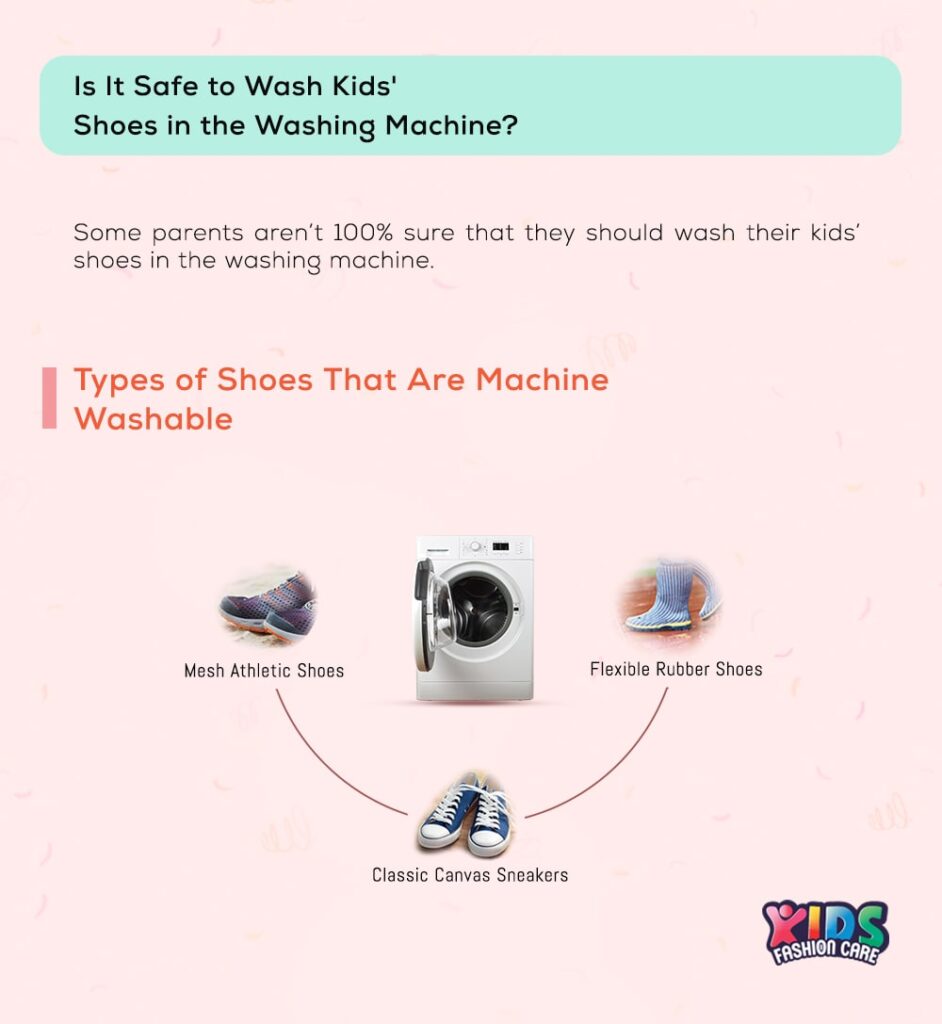
Some parents aren’t 100% sure that they should wash their kids’ shoes in the washing machine. In fact, they believe that some spot cleaning is more than enough, but I am here to tell you that’s not true.
Types of Shoes That Are Machine Washable
Some shoes, in particular, should be cleaned in the washing machine. There are reasons for that, and by going down the list, you will know just why. So here are some shoes that should be washed in the machine:
- Mesh athletic shoes: Shoes, typically from Nike, Adidas, and Under Armour, are made with synthetic uppers and rubber soles, which makes them ideal for machine washing. The porous material will allow for thorough cleaning and quick drying.
- Classic canvas sneakers: Classics like Converse, Vans, and Keds have tightly woven cotton fabric that can handle machine washing. The simple construction doesn’t come with excessive padding, and that makes them ideal.
- Flexible rubber shoes: Shoes such as Crocs, rain boots, and water shoes are designed for wet environments like the washing machine. They can handle it, so take the easy route and wash them in the machine.
- Performance knit shoes: Stride Rite Soft Motion has stretchy uppers that clean well in the machine but must be put in protective bags.
- Polyester or nylon school shoes: They have minimal leather accents so they can survive the gentle cycles of a washing machine.
Shoes You Should Never Put in the Washing Machine
On the other hand, there are shoes that you never put in the washing machine. There are reasons for that as well. Here are some of those ones:
- Genuine leather shoes: Leather cracks and warps get permanent water stains easily, so they should be washed in the machine. Smooth leather and nubuck varieties are also in this category.
- Suede footwear: Like leather, these shoes also crack and will lose their characteristic nap when machine washed. They require specialized dry cleaning methods instead.
- Dress shoes with glued components: Machine washing risks sole separation where the adhesive will dissolve.
- Light-up or musical shoes: They have electrical components that water will damage permanently.
- Winter boots with insulation: These are made to trap moisture, so machine washing will only result in mildew growth and a badly cleaned shoe.
How to Check the Manufacturer’s Care Instructions
I recommend that parents check the care instructions inside and in the box of every kid’s shoes. That way, you will know just how they are meant to be cleaned properly. The shoes will have tags that spell out how they are supposed to be cleaned. The common tags are:
- Machine wash symbol (a tub with water waves): The shoes are safe to be washed in a machine.
- Hand wash only (a hand in water): This tag says you should only wash them by hand.
- Do not wash (an X through the wash symbol): The shoes require professional washing.
- Temperature dots: Tell us the maximum water temperature the shoes can handle.
Preparing Shoes for Machine Washing
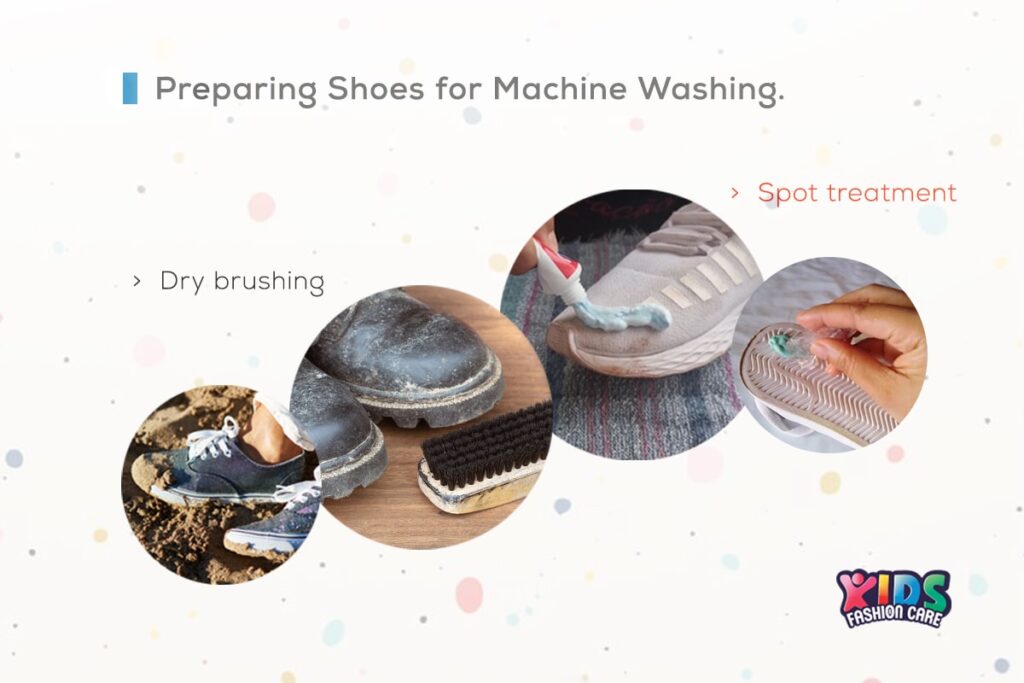
Before I explain how to clean kids’ shoes in the washing machine, I will explain how to prep them for it. Believe me, you can’t just throw the shoes in the machine and forget about them.
Removing Surface Dirt and Debris
First, the shoes need to be cleaned deeply on the surface. You must remove as much dirt and debris on the shoes before you can machine wash them. For this step, you will need to:
- Dry brushing:
- Use a stiff-bristled brush.
- Remove any dried mud and debris.
- Do this outside to keep your home clean.
- Spot treatment:
- If your kids’ shoes have gum, tree sap, or permanent marker, you need to do this step.
- Apply some rubbing alcohol or specialized shoe cleaner.
- Clean with a microfiber cloth for better results.
- Tread cleaning:
- Use a toothpick or specialized groove cleaner.
- Remove any pebbles and packed dirt for better results.
- Odor neutralization:
- Machine cleaning won’t always remove the bad odor.
- Sprinkle baking soda and wait overnight before machine washing.
Taking Out Laces and Insoles
Next, you will need to remove the laces and insoles from the shoes. Untie the lace and remove it for separate cleaning. The insoles need to be removed and washed by hand to prevent warping. If you have prescription inserts, talk with the orthopedic about washing instructions. Shoes with Velcro need to be fastened to avoid damaging the shoe or the machine.
Protecting Shoes During the Wash Cycle
Like I said, shoes aren’t just chucked into the machine for washing. Proper steps need to be maintained. I recommend mesh bags where you will put the shoes to prevent any potential drum damage. These come in many sizes, so you can find one that works for you.
Stuff the bag with clean towels to ensure the shoes’ shapes aren’t damaged. Put dirty towels or clothes in the machine as well so that it doesn’t make too much noise.
Optimal Washing Machine Settings
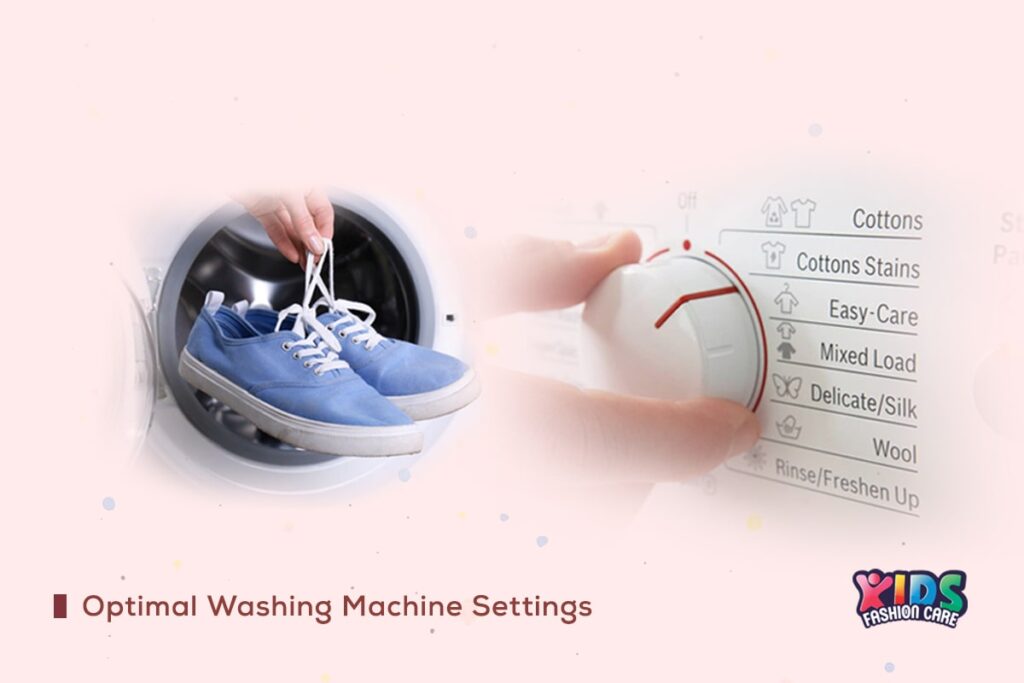
Once you have completed the above steps, you are ready to follow the instructions for cleaning kids’ shoes in the washing machine. My guide provides you with professional-level shoe-washing recommendations.
Choosing the Right Wash Cycle
Gentle vs. Regular Cycles
While a washing machine’s regular cycle is slow enough for normal clothes, it is still too powerful for kids’ shoes. That’s why they must be cleaned on the lowest, gentlest cycle possible.
I recommend “delicate,” “hand wash,” or “wool” to ensure the shoes are not damaged. Also, pick the lowest spin speed possible on the machine. I have found 600 RMP or lower to be the best. That speed will minimize structural stress.
Water Temperature Recommendations
Like with most delicate items needing to be washed in a machine, the water temperature is an important factor to consider. For washing kids’ shoes, the water temperature should be below 30°C/85°F. This temperature ensures that the shoe glue isn’t melted and the shape isn’t shrinking.
In addition, parents should enable the extra rinse option on the machine if possible. If not, they should repeat the rinse cycle once the washing is completed.
Selecting the Best Cleaning Products
Once all the settings are set, you need to decide on what cleaning product to use to wash your kids’ shoes. There are multiple options, and each has its own pros and cons. Let’s go over some, as this is an important part of the washing machine guide on how to clean kids’ shoes.
Mild Detergents vs. Harsh Chemicals
You don’t need anything fancy or strong to clean kids’ shoes. In fact, I highly suggest that you avoid using harsh chemicals such as bleach, fabric softeners, and stain removers. These chemicals will also damage the shoe and not even clean it properly.
Use liquid detergents like Tide Free & Gentle in their place, as these dissolve completely. They won’t leave any residue in the crevices or accumulate on mesh materials later. There are some other alternatives for different purposes you can use, which I will go over now.
Natural Cleaning Alternatives
If you are looking to remove odor, add 1/2 cup baking soda to the wash cycle. The soda will absorb the odor and be washed off during the wash cycle, and the shoes will be free of all kinds of odor. If the smell is really bad, you can also add 1/4 cup white vinegar to the fabric softener dispenser.
You can use oxygen bleach, like OxiClean, to remove different kinds of stains, but these work best only for white shoes. If your shoes have organic stains, I suggest enzyme cleaners. There are different kinds in the cleaning aisles, so pick one that will work for you.
Proper Drying Techniques
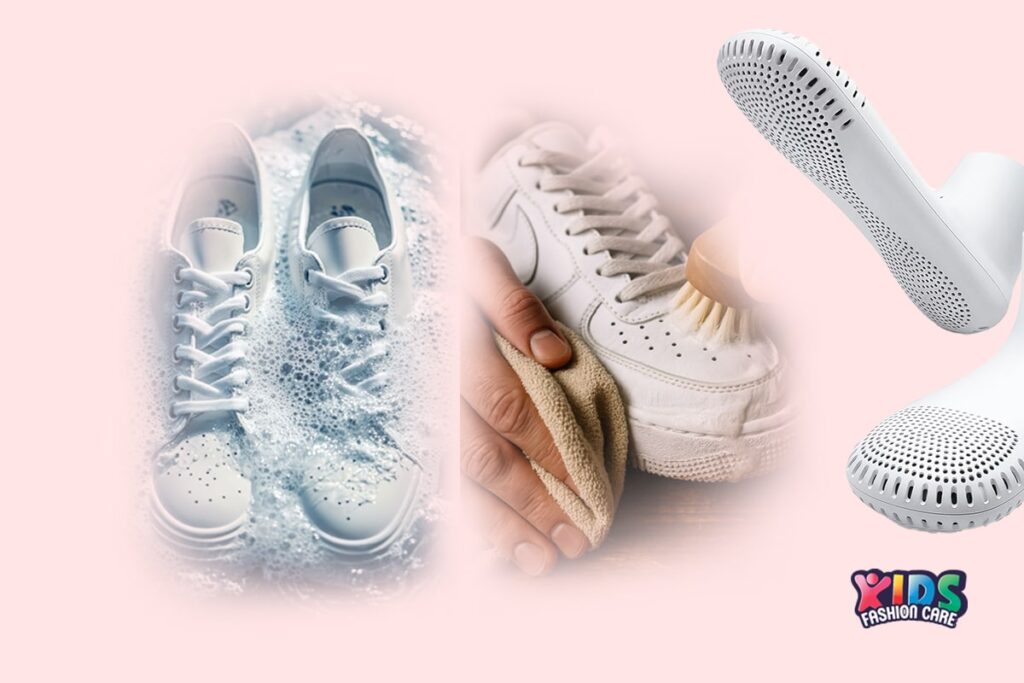
With all the washing steps completed, it’s time to go over the post-washing steps for how to clean kids’ shoes in the washing machine. That means how to dry your kids’ shoes.
Why You Should Avoid the Dryer
Since I went over how to wash shoes in the washing machine, I should be going over how to dry shoes in the dryer. WRONG! That’s the completely wrong thing to be doing. This is because the heat from the heater will only damage the shoes and not actually dry them. Using the dryer will result in:
- Adhesive failure:
- The heat will melt the glue holding the soles and other components together.
- Material warping:
- The high temperature of the machine will warp the rubber and plastic materials.
- Fabric damage:
- The stitching and synthetic fibers of the shoes will weaken.
- Mold risk:
- Not all the water will be removed, which will result in mildew growth.
Best Air-Drying Methods
The best method for drying washed kids’ shoes is to let nature do its thing. Air drying will give you properly dried shoes with no bad side effects. Here is how to air-dry kids’ shoes washed in a washing machine:
- Initial water removal: Press the shoes gently to remove excess water.
- Shape maintenance: Stuff them with paper to keep their shape intact.
- Airflow optimization: Hang them someplace with no direct sunlight and proper airflow.
- Periodic rotation: Turn the shoes around after some time for even drying.
- Moisture verification: Check the insole and toe areas for any wet spots before wearing them again.
Drying Time Estimates by Material
Different shoes will need varying amounts of time before they are completely dry, and that time will change even more depending on the washing machine. On average, a shoe takes one to two days to completely dry. Here are some accurate numbers for you to consider:
- Canvas shoes: Between 18 and 36 hours
- Mesh athletic shoes: Between 12 and 24 hours
- Rubber shoes: Between 6 and 12 hours
Alternative Cleaning Methods
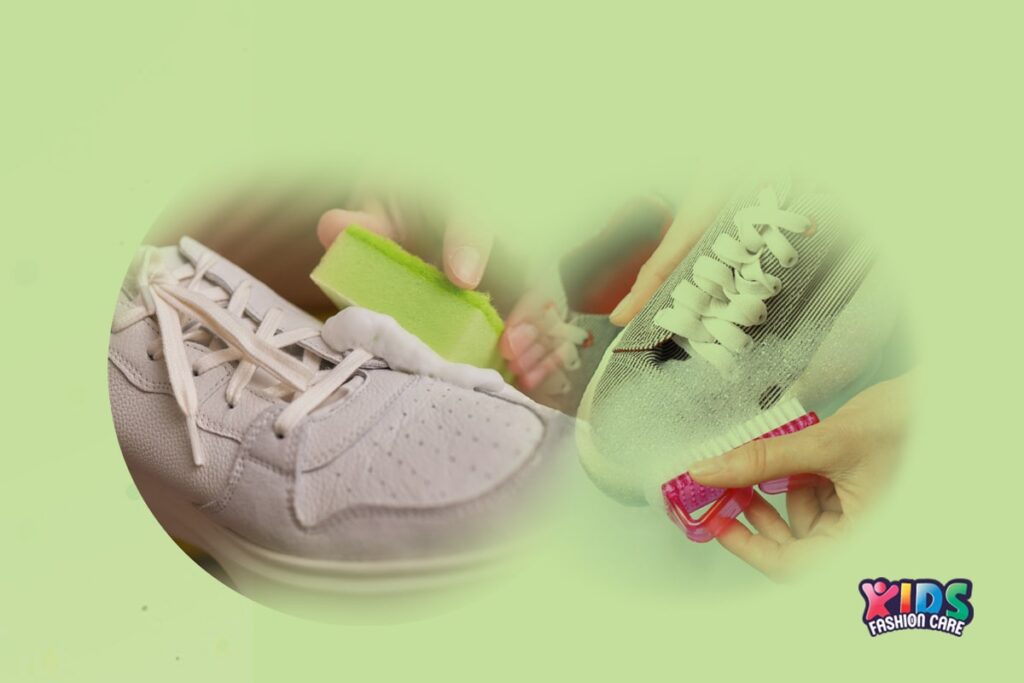
Aside from knowing how to clean kids’ shoes in the washing machine, you should also know how to wash them in other ways. These other ways can be better when a washing machine isn’t unavailable or advised.
Hand Washing Techniques
Hand washing is the gentler method of cleaning kids’ shoes that can’t handle the machine. To properly wash shoes by hand, you will need to mix a pH-neutral cleaner into water in a basin. Then, using a brush, you will go in a circular motion to clean the shoe. Initially, use a microfiber cloth to dry the shoe. Finally, air dry the shoes for the correct amount of time before wearing them again.
Dealing With Tough Stains
Sometimes, you don’t need to know how to clean kids’ shoes in the washing machine; instead, you need to know how to remove stains from them. So here is how:
- Grass stains: Use a mixture of baking soda and hydrogen peroxide and clean with a brush.
- Mud stains: Dry the mud stains and then brush them off using vinegar.
- Ink marks: Use some cotton swabs with rubbing alcohol to remove ink stains.
- Gum residue: Freeze the gum with some ice cubes, then scrape it off gently.
- Scuff marks: Magic eraser pads work well to remove the marks without damaging the shoes.
Maintaining Clean Shoes Longer
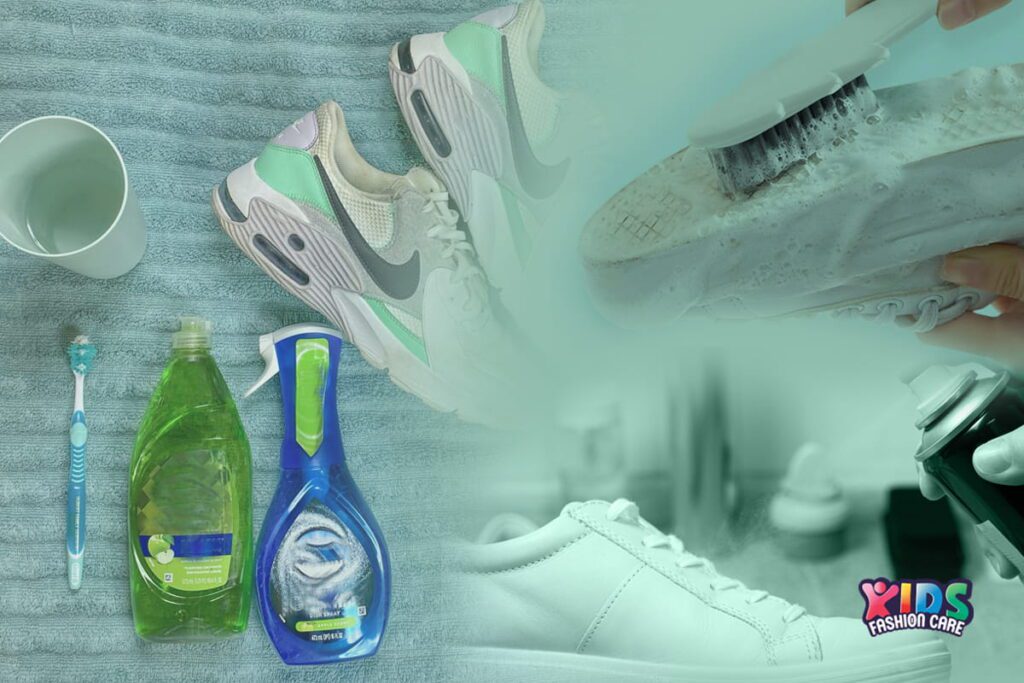
Cleaning kids’ shoes in the washing machine is a good way to prevent them from wearing out too soon. However, there are other steps you can take to ensure they last longer.
Daily Care Routine
Using simple disinfectant wipes to clean the outside of shoes after wearing them for a long time will help them last. You should also immediately clean off any stains on the kids’ shoes instead of waiting.
Don’t lock up your shoes in closets, as the heat will only damage them, and the odor will grow. Keep them somewhere with airflow, like in the open or inside breathable bags. Also, don’t wear a single pair of shoes for a long time, as that will wear them out faster. Rotate between pairs to keep them lasting longer.
Odor Prevention Tips
One of the biggest problems for parents with shoes is bad odor. So here are some quick and natural ways to prevent bad odor in your kids’ shoes:
- Daily air-out:
- Pull out the soles and hang them
- Overnight, stuff the shoes with newspaper or cedar shoe trees
- Always keep your shoes someplace well-ventilated
- Never put your shoes inside closets or lockers for too long
- Natural deodorizer:
- Sprinkle some baking soda inside the shoes
- Place activated charcoal bags inside shoes
- Spray a mixture of tea tree oils and water
- Washing insoles and socks:
- Only place machine-washable insoles, like from Dr.Scholl’s
- Or have kids wear only moisture-wicking socks
- Freezing for extreme odor:
- Seal shoes inside plastic bags and place them inside the fridge overnight
When to Replace vs. Clean
Sometimes, it’s a question of when to replace kids’ shoes and not how to clean them in the washing machine. Here is how you can tell it is time to get your kids new shoes:
- Worn-out soles: Shoes without grippy soles must be replaced; they are a slipping hazard.
- Holes or tears: If your kids’ shoes have too many holes in them, replace them.
- Persistent odors: Shoes that have a smell even after cleaning them should be replaced.
- Too small: Kids’ shoes must always fit; otherwise, replacing them is recommended.
- Broken support: Insoles that are too flat or collapsed shouldn’t be worn.
Frequently Asked Questions (FAQs)
Can I wash shoes with memory foam insoles?
Remove memory foam insoles before washing, as they absorb water excessively and develop mildew. Hand wash separately with mild soap, rinse thoroughly, and air dry completely (it may take 48+ hours). Consider replacing if odors persist after drying.
How do I prevent colors from fading?
Turn shoes inside out before washing, use cold water only, select color-safe detergents, and air dry away from direct sunlight. For bright colors, consider specialty products like Woolite Darks. To maintain vibrancy, reapply fabric protector sprays after washing.
Is it safe to wash shoes with Velcro closures?
Yes, but take precautions. Fasten all Velcro straps securely before washing to prevent snagging. Place in a mesh laundry bag for added protection. After washing, use a toothbrush to remove any lint from the hook side of the Velcro to maintain sticking power.
What about shoes with removable orthotics?
Always remove custom orthotics before washing shoes. Clean orthotics separately according to your podiatrist’s instructions (usually wiping with a damp cloth and mild soap). Never submerge or machine wash orthotics unless the prescribing healthcare provider specifically approves.
Conclusion
Clean kids’ shoes in the washing machine is the best method, even though it’s not for all shoes. The machine ensures that the shoes are cleaned thoroughly and without taking too long. But you need to be careful, as the shoes must be washed in cold water and at the lowest speed and setting. Parents should only use mild detergent and natural deodorizer if the shoes smell bad.
Shoes should also be taken care of to ensure they last a long time. Air drying them, removing stains quickly, and keeping them in well-ventilated areas are just a few things both parents and kids can do to maintain their shoes for a long time. However, no shoes last forever, so it’s essential to know when to replace them as well. I suggest every other year, depending on wear.

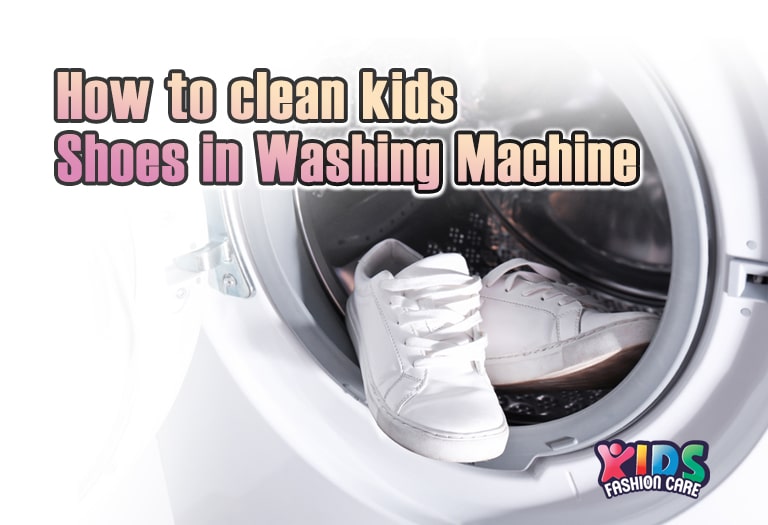

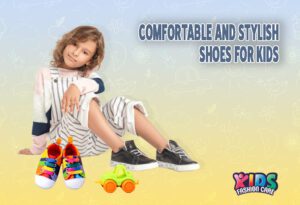
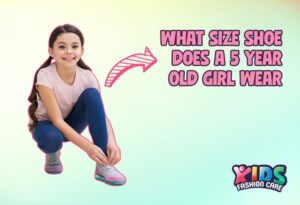
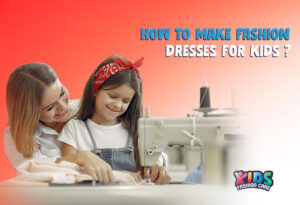
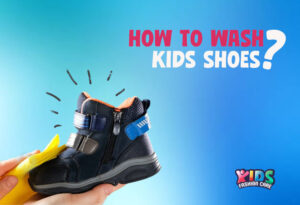
Your writing has a way of resonating with me on a deep level. I appreciate the honesty and authenticity you bring to every post. Thank you for sharing your journey with us.